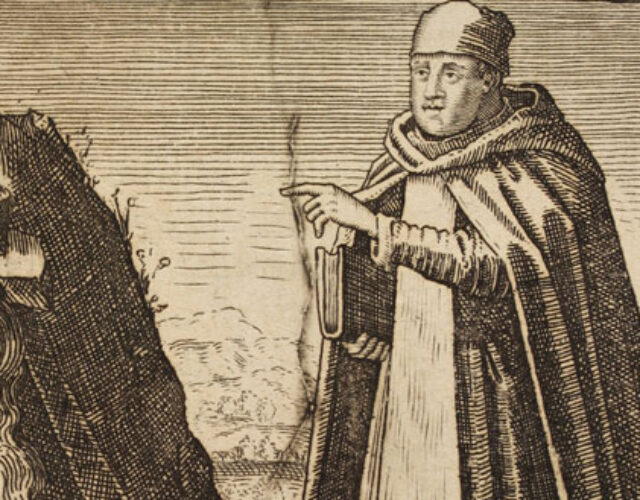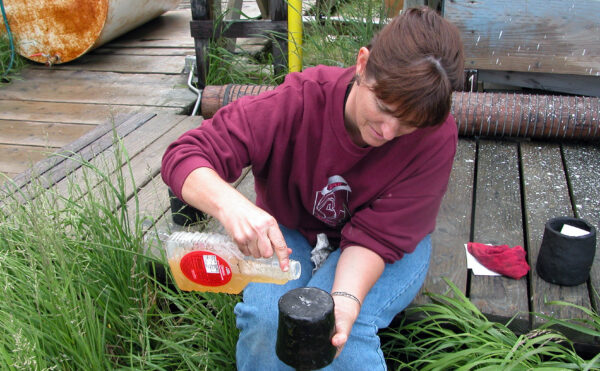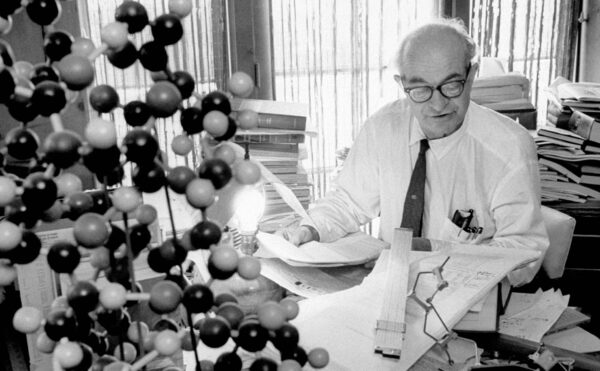An iconic alchemical image shows a tiny figure on top of a mountain. In the bowels of the mountain fumes of mercury and sulfur combine to form veins of metal. To the side a gargantuan St. Thomas Aquinas points at the scene with an I-told-you-so gesture. A similar image features Albertus Magnus, recognizable in his bishop’s miter, pointing at a hermaphrodite. The uninitiated might well wonder what the “universal doctor”—as Albert was known owing to his great erudition—and his famous student are doing in these bizarre alchemical tableaux.
Albert was perhaps the most wide-ranging thinker in 13th-century Europe. At that time a great revival of learning was taking place: Greek and Roman classics recovered via the Islamic world, along with learned Arabic commentaries, were being assimilated in the Christian West. Albert recognized the long shadow cast by Aristotle, and he, along with his student Thomas Aquinas, was responsible for developing the Christian Aristotelianism on which university education in Europe was founded. In the course of his lifelong study of Aristotle, Albert set out to write paraphrases of all of the philosopher’s extant works. Where there were gaps, Albert re-created the works he thought the great philosopher would have written.
One such creation was Albert’s Liber de mineralibus (Book on Minerals). Aristotle left only passing remarks on mineralogy, mentioning two underground exhalations, a “dry smoke” that produces stones and a “watery vapor” that produces metals. Fleshing out this explanation, Albert drew on the mercury-sulfur theory of Avicenna (the early-10th-century Islamic philosopher), equating the dry smoke with sulfur and the watery vapor with mercury. Within the Earth, Albert explained, these vapors combine to form metals, hence the iconography in the Aquinas image. Albert also joined the debate about whether these natural processes were reproducible by alchemists and whether their productions could be thought of as real or were necessarily inferior to natural metals.
Albert’s work became involved in its own real-or-fake debate, as his manifest interest in alchemy led later writers to attribute alchemical texts to him, such as the Libellus de alchemia (Little Book on Alchemy). Even more popular were books of secrets, or chemical-recipe books, attributed to Albert. De secretis mulierum (The Secrets of Women) was published in dozens of editions, spurred on no doubt by its enticing title.
CHF holds numerous editions of Albert’s Book of Minerals and of books of secrets attributed to him. The most mysterious is an edition of the Liber secretorum. The only clue to its publisher or publication date is a printer’s mark on the title page, which can be identified as belonging to Pierre Viart, a Parisian publisher active between 1515 and 1523. But where Viart’s name should appear—in the scroll in the bottom of the mark—it has plainly been excised. The answer to this mystery might lie with the printer’s wife, Denyse de Marnef. She came from a printing family and might have printed the book herself after Viart’s death in 1523. She remarried quickly to another printer, Ambroise Girault, who published a couple of books in 1524 under his own name but with Viart’s printer’s mark. Our book may date from this period. Or it may date from after Girault’s death around 1547, after which de Marnef continued printing in partnership with her brother Jérome. Research on this particular woman’s secret continues.




